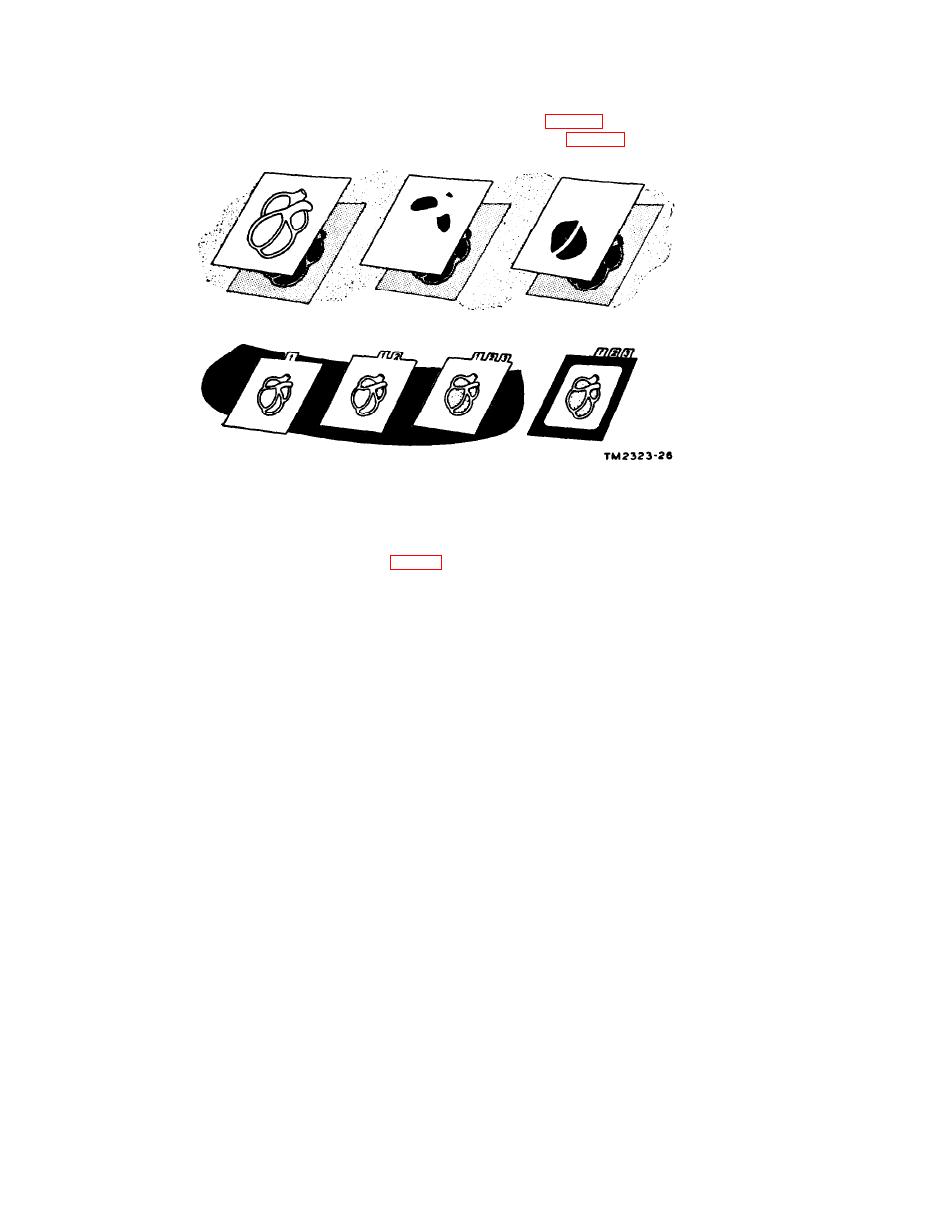
(3) Consider each tracing as a color separation master, and print
each on the appropriate color Ozalid foil (par. 28b).
(4) Mount the foil transparencies as overlays (par. 31d).
Figure 18. Preparation of color overlay transparency.
c. Tramparent Photographic Negatives and Positives.
(1) A three-color transparency may be obtained by using a photo
graphic positive and a photographic negative transparency
of the same image (fig: 19).
(a) Duplicate the negative on Ozalid foil of a particular color.
(b) Duplicate the positive on Ozalid foil of another color.
(c) Superimpose the two colored transparencies in register.
The result. will be a single transparency in two pure colors
with graduations of the intermediate color.
(2) When the charts or drawings are so complex that tracing is
impractical, obtain duplicate positive (or negative) photo-
graphic transparencies of the original. Use a razor or other
sharp blade to cut out of each transparency the portion that
is not to be projected in the color to be used for that particular
part. Print each modified transparency on Ozalid foil of
a different color, and superimpose the foil copies in register.
(3) Obtain a black-and-white photographic negative of the im-
age to be projected, or duplicate a negative photostat of
the image on Ozalid micro-black foil. Modify the clear
lines with transparent ink of different colors, as desired.
When projected, the clear lines of the transparency will
show in color.
32
TAGO 4738B

